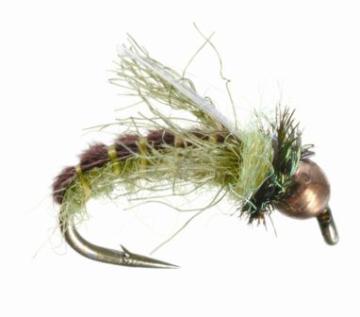
On The Fly
"Fly tying is a school from which we never graduate"
TYING NEWS
The Southern Oregon Fly Tiers met Tuesday, April 8th at the Madrone Hill community building near Gold Hill. We continued our monthly series of guest tiers in a tie-along format. Our guest, Ron Metzger, did a very informative introduction to tube flies. His presentation covered tools, materials, and instructions on tying a trout fly and a steelhead fly. In May, we have scheduled Lee Wedberg to demonstrate the tying of his killer stonefly pattern. We encourage novice and experienced tiers alike to drop by the second Tuesday of each month for a fun evening. We have plenty of room for everyone. If you are interested in this educational experience, contact me and we will add your e-mail address to our contact list so that we can let you know who, when, and what materials to bring. Congratulations to D.J. MacDonald on the opening of his new fly shop in Medford. It’s called Southern Oregon Fly and is located at 702 W. Main. Check it out soon.
 PATTERN OF THE MONTH - Z-Wing Caddis
PATTERN OF THE MONTH - Z-Wing Caddis
Hook: Daiichi 1120 or equivalent, curved, heavy wire
scud hook,
size 14-20.
Bead: Optional, small copper.
Thread: Olive 8/0.
Rib: Chartreuse monocord or equivalent 3/0 thread.
Wingcase: Golden brown turkey tail feather slip.
Body: Buggy nymph dubbing, olive/dun blend.
Wing Pads: Light dun to dark dun Z-Lon or poly yarn.
Collar: Buggy nymph dubbing, caddis green.
Head: Peacock herl.
Tying Instructions:
1) (If your fly is to have a bead head, slip the bead onto the hook and slide it
forward until it is against the eye.) Start the thread two eye-widths
behind the eye (or bead) and wind the thread rearward laying down a
thread base to a point half way down the bend.
2) Tie in the thread for the rib and let it hang to the back.
3) Tie in a slip of turkey tail for the wingcase and let it hang to the
back.
4) Dub the thread and wrap it forward to the thread tie-in point and
tie off.
5) Pull the wingcase over the dubbed body and tie-off.
6) Wind the rib material forward in five even turns, then tie-off and
trim both the rib and turkey slip.
7) Tie in a one-inch piece of Z-Lon or poly yarn on top of the hook and
tie down the material so each end of the yarn sticks out on opposite
sides of the fly. Trim the yarn wing pads to about ¾ the length of the
body.
8) Dub the thread for the collar and wind it forward halfway to the eye
(or bead).
9) Tie in a couple peacock herls, twist them around the thread, then
wind forward to form a head. Whip-finish and apply cement.
The Z-wing caddis was developed by Mike Mercer of
Redding, California, as his improvement to the famous Deep Sparkle Pupa
of Gary LaFontaine, not that it needed improvement. The curved hook
gives a natural, hunched profile. The wingcase of turkey tail with its
mottling and hairy appearance gives realism not found in synthetics.
The mixtures of colors in the dubbing and the contrast of colors at the
collar gives a natural insect look. The Z-Lon or poly yarn used as wing
pads to imitate the semi-formed wings, creates the transparency and
shape. And of course, peacock herl for the front collar glitters with
an attracting iridescence unequaled by any other material. Together
these components make up one of the most effective caddis pupa
imitations available today.
For the fly fisher, day in and day out, throughout
the season, it is the pupa – that transitional form of the caddis
between larva and adult – that gets the job done. This is the stage
where the larva begins to take on aspects of the adult, releasing from
the rocks and rising towards the surface. As such it is fished from
bottom to top in the water column. Designed primarily for moving water,
the pattern can be tied in a variety of sizes, with or without a bead.
Three colors can cover hatches throughout the season: lime green in the
spring (Mothers Day), olive on cloudy days or in the fall, and amber
all year. The Z-Wing Caddis is a design that is relatively simple and
fairly straightforward. Most important it looks like what it is
supposed to be imitating and works.
TYING TIPS
The body should be dubbed heavy with a slight taper.
When you pull the wingcase over the body, be careful to not pull too
tight because this causes the turkey tail material to split and thus
expose the body material on top. When you tie the Z-Lon up against the
body dubbing this will naturally splay the fibers at a 45-degree angle
to the hook shank.
This is a moderately easy pattern using common
materials. So tie some up and give them a test flight. Let me know how
they work.
Tie One On,
Dan Kellogg (you can contact me at FLYGUY@EZNORTHWEST.COM)